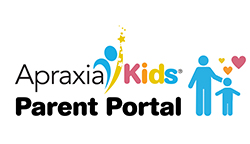Bullying is a serious problem for some students but not all acts of aggression that are concerning are understood to be bullying. To qualify as a bully, a child must repeatedly use aggression intentionally to hurt someone and to obtain privileges or to demonstrate power over his or her peers without provocation. Bullying behavior is broadly defined to include physical and verbal attacks, damage to the victim’s valuable possession, attacks on victims’ relationships and reputation, attempts to exclude and attempts to humiliate. Thus, single assaults and fights between children of equal physical or social power are not considered bullying. Expressions of anger may energize aggressive behavior but bullies are not responding to frustrations rather bullies use aggression to obtain status or resources. It is important to avoid labeling fights between equal peers as bulling because the prevention efforts may be different. Childhood bullies are at risk for displaying a lifetime pattern of manipulative, exploitive, aggressive, and anti-social behavior. The most effective treatments for severely aggressive children are intensive coordinated efforts that involve parents, teachers, and mental health professionals in order to assess and alter the different causes of such behavior. These treatments are most effective with younger children.
Victims of bullies by definition are not able to defend themselves from bullies’ attacks and are more likely to display of anger in a maladaptive way and to engage in helpless withdrawal. Victims and bullies are usually different children, although a few studies have found that the prevalence of youth in a sample who can be classified as both a bully and a victim increases in adolescence. A number of different characteristics are associated with being the target of bullies, including physical weakness in boys, peer rejection and neglect, and an inability to adequately manage frustrations, whether by helplessly withdrawing from social interactions or by attempting counter-aggression. Social withdraw rewards the aggression and counter aggression generally results in more aggressive exchanges and does not effectively end bullying. Victims are also at risk for poor outcomes in the future including symptoms of depression, anxiety, rejection by peers, aggression, and escalating problems handling emotions and peer relationships. Individual therapies have been found effectively reduce anxiety and depression in children. Also, promising work is being conducted in the positive psychology field on ways of reducing the risk for depression among children in adverse situations.
The relationship between having a disability and being victimized may be complex but there has been almost no research. Potentially, the most severely disabled children are less likely to be victimized because these attacks are viewed by other children as morally reprehensible. In contrast, the child with a more limited disability who is able to participate well in sports and play and/or to perform well in school, might be at much higher risk for being victimized because bullies perceive children with disabilities to be less able to defend themselves. A disabling condition also might increase a child’s risk for social isolation if the disability disrupts a child’s expression of joy, interest, and enthusiasm that are so important to the development of protective friendships.
Though lacking in attention to children with disabilities, the existing research has demonstrated the serious consequences for children involved in bully/victim relationships and has guided the development of school-wide intervention programs. Large scale interventions have been implemented around the world with some core common features. School-wide prevention programs clearly define bullying, increase adult supervision, apply consistent consequences to aggressive behavior, and support victims emotionally as well as functionally. Outcome studies of school-wide prevention programs find that these program result in a modest reduction in the rate of observable aggression with little evidence of a positive effect on the quality of interpersonal behavior. Thus, students did not display more respectful or supportive behavior towards each other.
What can be done right now? Developmental scientists are only just beginning to examine ways of facilitating friendships for children with disabilities that reduce stereotyping and social neglect. Contact with peers in fun and engaging environments is likely to be an important step. Parents, teachers and others should look for specific child strengths and create frequent opportunities for the child with a disability to interact with peers in situations where that child’s strengths are emphasized. Direct attempts to reduce peers’ fear, anxiety, and frustrations may also be effective for facilitating supportive peer relationships. Research has shown that experience with a peer who has a disability is associated with less disability-related stereotyping.
In general what has been shown to help schools reduce bullying is for parents to know what is and is not bullying. The most effective institutional responses to aggressive behavior depend on clear, consistent enforcement of rules and expectations for conduct and so require participation and commitment by a number of school personnel. It is essential for parents to ask children about their experiences with bullying because most children do not tell adults about being bullied. If a parent suspects that a child is a bully or a victim, that parent should consider seeking an assessment from a competent mental health professional. Parents must be aware of the school policies and community laws addressing bullying and work with the school to protect all children from bullying. Do not expect children to learn anything positive from being bullied and do not advocate retaliatory violence because retaliation escalates aggressive exchanges. Parents must help the victimized child to identify when and how to draw on adult authority as appropriate. Most important is that parents, teachers, and communities take the issue seriously.
This article was originally published by Kelly Champion, Ph.D. as an Ask the Expert article in the Apraxia-KIDS Monthly Newsletter, August 2005.
